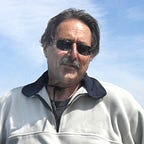Fort Ross, California
A place to travel back in time
Story and photos by Jim Shubin
One hundred miles north of San Francisco, on the Sonoma County coast, Fort Ross was established by the Russian American Company (RAC) in 1812. A St. Petersburg-based firm with the mission of fur trading and establishing settlements in coastal North America, the RAC was founded with 25 Russian craftsmen and 80 native Alaskan “sea hunters,” skilled at spearing otter and fur seals.
At its largest, Fort Ross was home to several hundred Russians, native Alaskans and native Californians, and included a bake house, bath houses, threshing floors, grindstones, a tannery, a brickworks, a blacksmith shop, large barns and corrals, houses and gardens, and a boathouse. The settlement was once considered luxurious, with four pianos, glass windows, and wood-burning stoves. It was the site of California’s first windmills and shipbuilding.
Today it’s a 3,400-acre park showcasing the Russian-era fort compound, but only a few buildings remain. These photos are of reconstructions of the Russian Orthodox chapel, the Kuskov House, the magazin, and two corner blockhouses.
Fort Ross is about lots more than history, though. The California State Parks system offers a robust program of natural history and cultural heritage field trips, guided nature hikes, living history programs, environmental studies programs, and many other educational resources — even an augmented reality app (Agents of Discovery) for families with K-12 students.
Learn more, including hours, driving directions, and accessible features, at the California State Parks website.
If you liked this article about California history you might also enjoy these others from authors at (San Francisco) Bay Area Travel Writers:
- San Francisco Bay Waterfront Tour with Liam O’Donoghue by Susan Alcorn.
- Quirky Calaveras: From jumping frogs to jackalopes, the world’s most-tattooed man, and caverns that moan eerily when it rains by Laurie McAndish King
- Point Sur Lightstation: A Haunted Ghost Town on Ocean-View Big Sur Real Estate by David A. Laws
